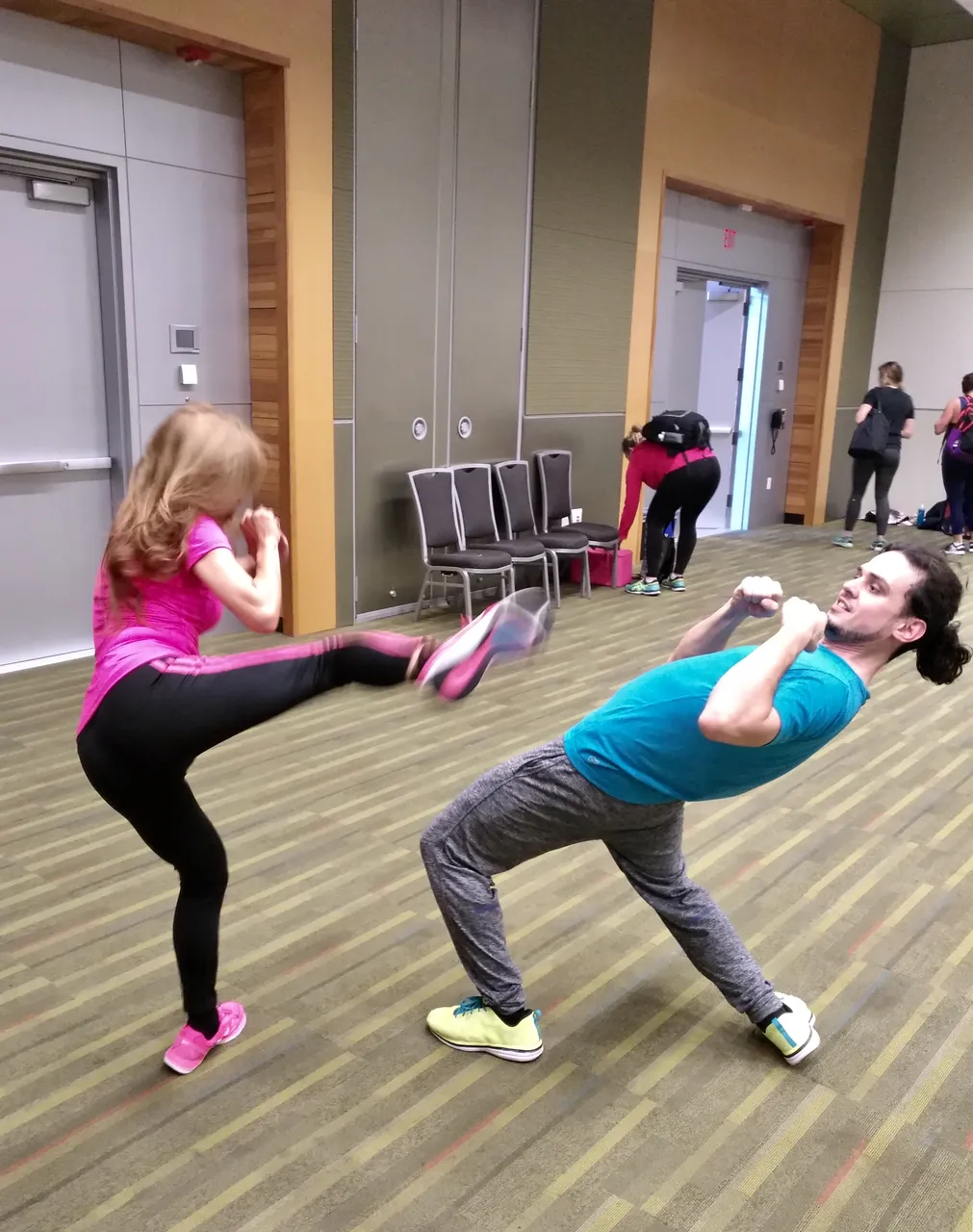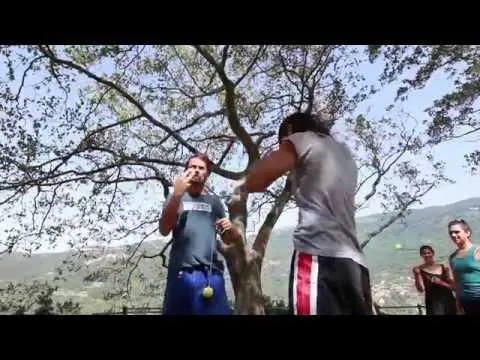I came across a marvellous fitness format recently called Fighting Monkey and it truly has been one epiphany after another since. This technique is fundamentally based on partnered exercises which is one of the reasons it appeals to dancers and athletes alike. By dealing with a situation rather than going through a preconceived exercise, not only can a supreme level of control be achieved but it also defies the way injury has been defined by modern medecine. Through games, your partner creates the situations so you constantly have to adapt, similarly to Kung Fu training, with none of the orthodoxy. The videos I have been watching on their YouTube channel renew my sense of duty as a fitness instructor to minimize injury and maximize the participant’s investment of their time. I only began this journey but I have started incorporating a lot more partnered exercises in the classes I had time to teach since.
Breaking the Stigmas of Social Isolation
That an athlete has to train so much alone is a western concept and one it is time we revise. It is a mistake to think that the movement industry is one where isolation should be the standard. An individual is nothing if not the sum of the parts, so why do we insist on propagating these rigid mechanical movements done with no conscience of the environment or situation? Doing an exercise alone simply does not offer the feedback necessary to adjust the biomechanical alignment in the body; it is basically reinforcing repetitive movements which in turn will lead to overuse of the joints. We need to find new ways to encourage people to bring mindfulness to their exercise routine. I see so many people dealing with injuries every day and have come to feel all to powerless about this. That is why I find Fighting Monkey so interesting, because at this point in my career as a fitness instructor, I need a new challenge. I need a way to bring more good to people with minimal increase in risk to their health. It is my duty as a prevention health care professional.
Working with a partner has a tremendous impact on neuroplasticity as it fosters adaptative behavior. Fighting Monkey also emphasizes the importance of play and of re-learning to be a child, which is a sure recipe for success. I hear that many of the games are invented on the fly by the players. Some are competitive, some less and most are just variants of staples like dodging a tennis ball attached to a string. When you exercise alone, your movements tend to be too perfect. But with interactive work, you can only embrace your mistakes. There is no wrong way to move because a framework is there for you to gain confidence gradually. Ultimately, I am convinced that Fighting Monkey increases perseverance more than your average discipline; however, it mostly attracts professionals of the movement industry. I hope that I can use my fitness classes as a laboratory to bring elements of this philosophy to the public. I am convinced that with any luck, I can improve my participant’s sense of belonging and share with them the value of play. Of course, I have seen partnered work being demonstrated at different conferences, but it is the philosophy behind Fighting Monkey that will make it more natural to promote. The context in which we move is complex often social so in that respect one should seek out partnered work should she wish to perfect movement efficiently
Redefining Injury
Another thing I like about this school of thought is that rest has been overrated as a cure to injury. If you get injured, rest, feel better and then go back to train in the same way, you are only going to end up with the same injury over and over again. In order to break the cycle, it is wise to change something in the way you perform movement. Baseball players spend a lot of time fine tuning their upper bodies and often forget that their legs play a fundamental part to achieve the precision which they need to play ball. That kind of kinetic awareness cannot be intellectual, it has to be visceral and Fighting Monkey will train you to work from a place of instinct where every time you exert yourself, it will be organically fluid. They call it Intelligent Movement, it is about fostering one’s love for motion by constantly reinventing what it is, what it means to be alive. Age is a state of mind rather than a number and although your body may ache, there are ways to stay young. One thing I have observed about a technique named Eathquake Architecture is that it resembles osteopathy in many ways. That being said, my experience with osteopathy and other forms of body healing therapies is that the patient tends to remain rather passive. With Eathquake Architecture, one plays an active part in their recovery which is intriguing in that it centers the responsibility of your recovery on yourself instead of the therapist. I would imagine that this leaves more room for the therapist to focus on not doing harm to the body while you can get a better sense of what is going on internally. Interestingly, I find that the best way to improve and maintain posture is to be inquisitive about the signals of the body thus opening a dialogue with the physical self. Does my left side feel more tense than the right? And what about after this yoga posture, have things changed, do my shoulders feel lighter? Etc etc. It is difficult to establish the part neuroplasticity plays when it comes to injury and with any new concepts about biology, it requires a leap of faith. No one is disputing that rest is crucial in order to heal and many are interested in knowing how soon and how hard to get back at it.
Monkey see Monkey Don’t Do
What is the Monkey? It is the negative self-talk, the I can’t do this, the it can wait until tomorrow. In essence, you are fighting the Monkey in order to grow with this unique form of martial art which zeroes in on the fight against one’s self. To be nimble and agile, not only do you need confidence, you need to get rid of the elements which can erode that confidence. Treat the cause instead of the symptoms. The Monkey doesn’t care about how much time you waste when you exercise but you do! The more tools you have in your arsenal to outsmart this cheeky protagonist the better.

I took this photo with Jamie at the CanFitPro 2017 Conference.
Here is the video which inspired this article.
